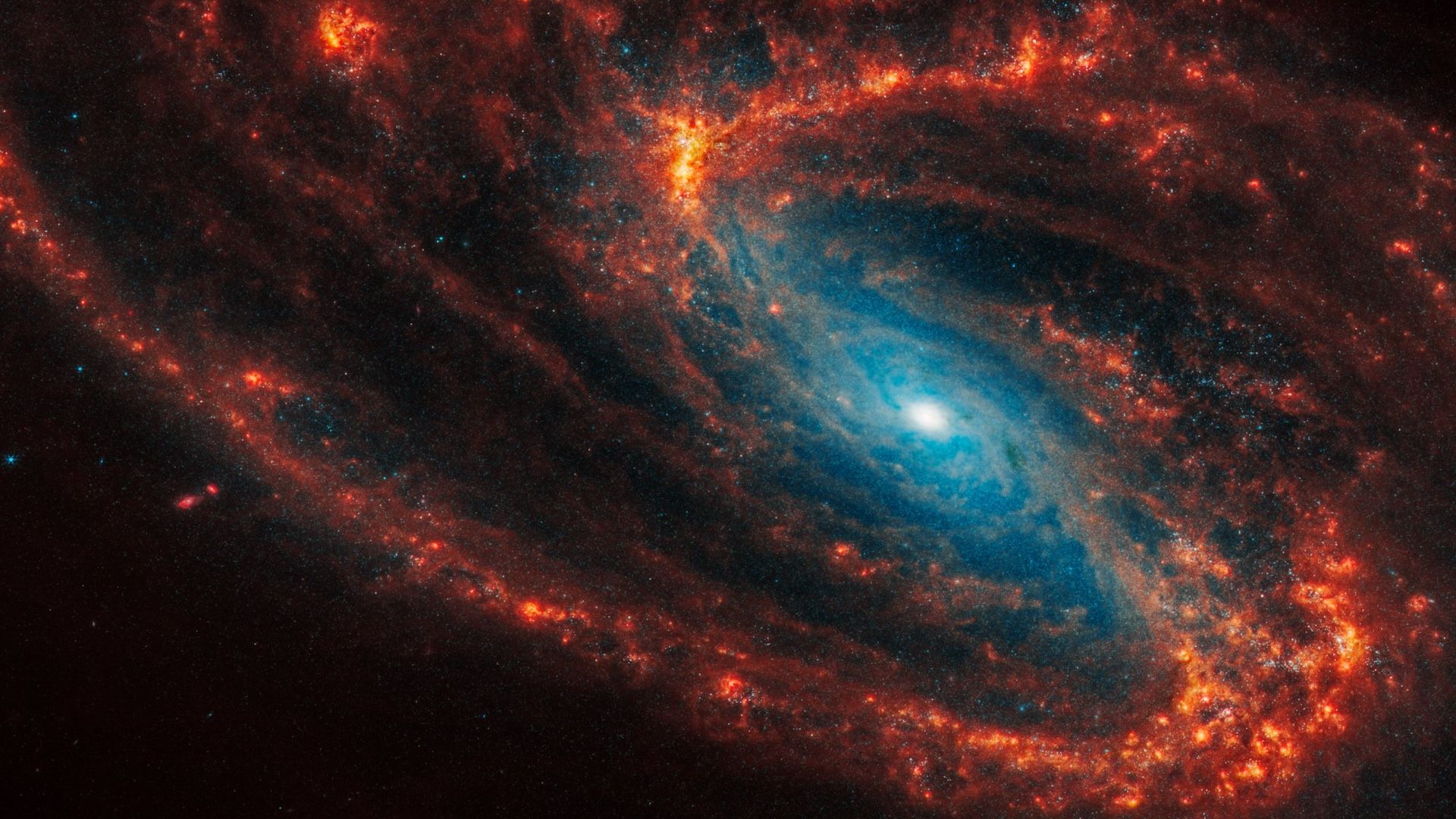Follow us on Google News (click on ☆)
In the spiral galaxy NGC 3627, located in the constellation Leo, researchers have identified a gaseous trail with impressive proportions. Measuring approximately 20,000 light-years long and only 650 light-years wide, this structure extends across nearly one-fifth of the diameter of our Milky Way, like a scar on a galactic face. Mengke Zhao, an astronomy PhD student at Nanjing University, emphasizes that this is the sharpest trail ever observed, clearly distinguished from the two spiral arms of the host galaxy by its elongated shape and low luminosity.

NGC 3627, a spiral galaxy located 31 million light-years away in the constellation Leo, hosts an exceptional cosmic trail
Credit: NASA, ESA, CSA, STScI, J. Lee (STScI), T. Williams (Oxford), PHANGS Team
This fortuitous discovery resulted from analyzing data collected by the PHANGS program (Physics at High Angular Resolution of Nearby Galaxies), which uses several cutting-edge telescopes like James Webb and the ALMA array in Chile. Webb's infrared observations revealed the presence of dust in the trail, while ALMA's measurements detected significant quantities of carbon monoxide. These spectral characteristics allow tracing the composition and physical properties of this unusual gaseous structure.
According to a theoretical model developed in 2021, this trail could have been created by the rapid passage of an extremely massive compact object through the galactic disk. Calculations indicate that this object, estimated at approximately 10 million solar masses, was moving at the dizzying speed of 300 kilometers per second (about 670,000 mph). The significant turbulence observed in the trail corroborates this hypothesis, suggesting a violent interaction with the interstellar medium about 20 million years ago.

The cosmic trail extends 20,000 light-years, representing one-fifth of our galaxy's width
Credit: Zhao et Li 2025, arXiv; CC BY-SA 4.0
Astronomers are considering two main scenarios to explain the nature of this compact object: it could be either a wandering supermassive black hole or the dense core of a dwarf galaxy. However, direct detection remains difficult due to NGC 3627's distance. Researchers now plan to systematically study PHANGS observations to identify other similar structures, which would allow better understanding of the frequency and behavior of these massive objects traversing galaxies.
Wandering black holes in the Universe
Unlike supermassive black holes that reside at the centers of galaxies, wandering black holes move freely through interstellar space. These objects typically form during galactic mergers or violent gravitational ejections.
Their detection represents a major technical challenge since they don't emit light directly. Astronomers must rely on indirect methods like observing gravitational lensing effects or the disturbances they cause in surrounding gas.
These cosmic vagabonds can reach considerable masses, sometimes several million times that of the Sun. Their movement speed varies considerably, with some reaching several hundred kilometers per second due to gravitational interactions.
Studying these mobile objects helps better understand galaxy dynamics and the processes of large-scale structure formation in the Universe.